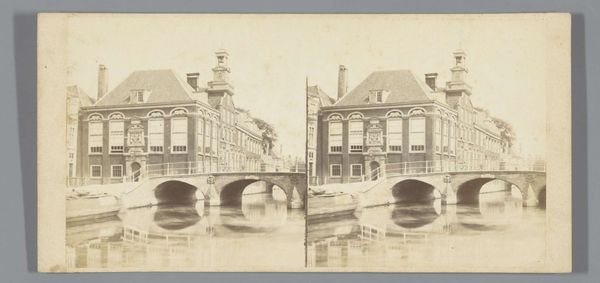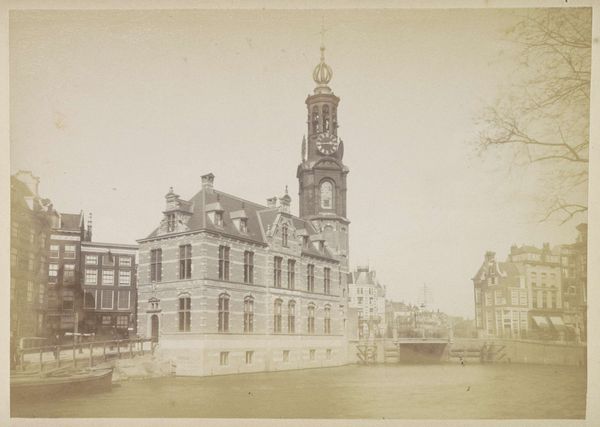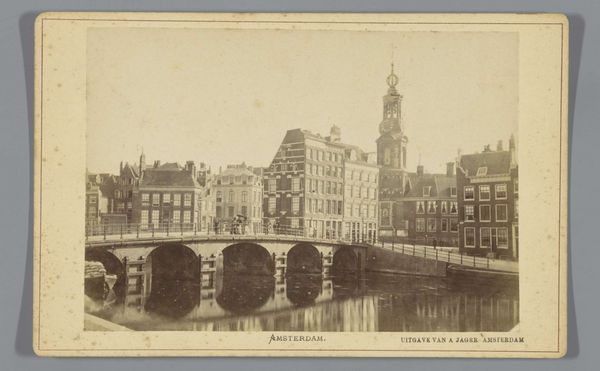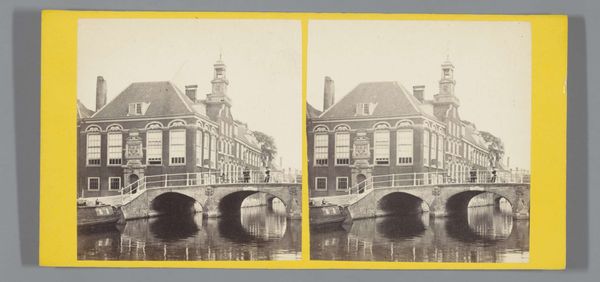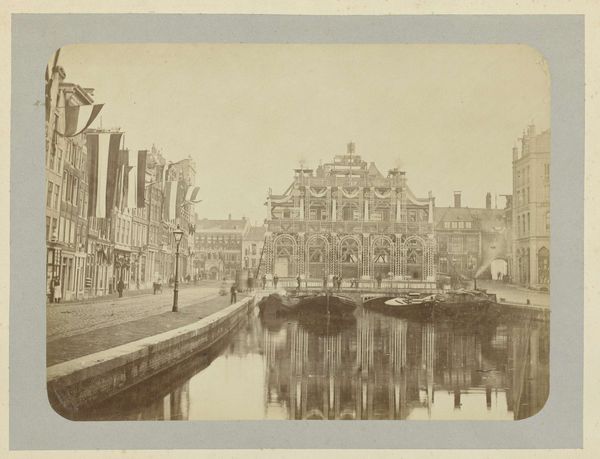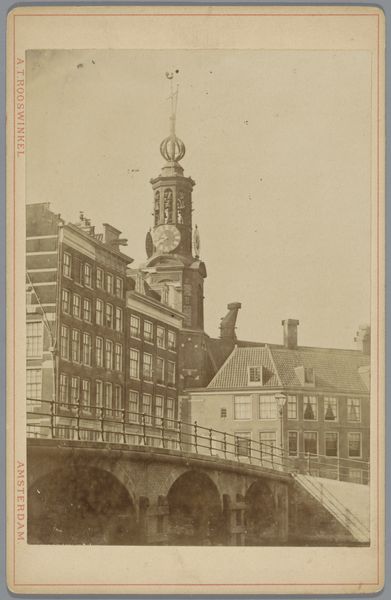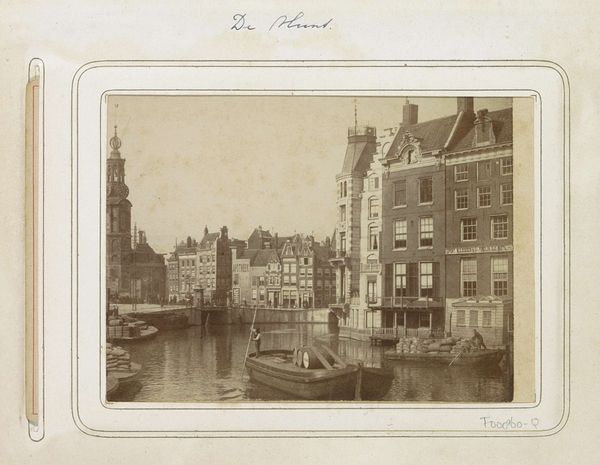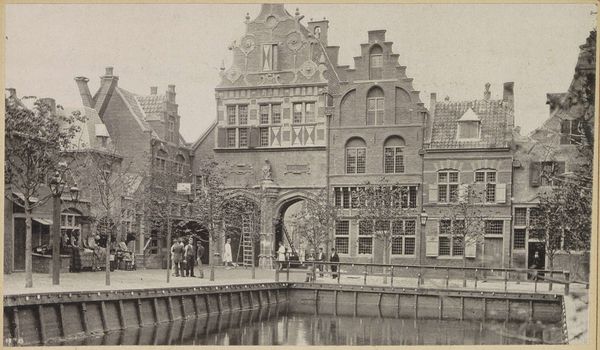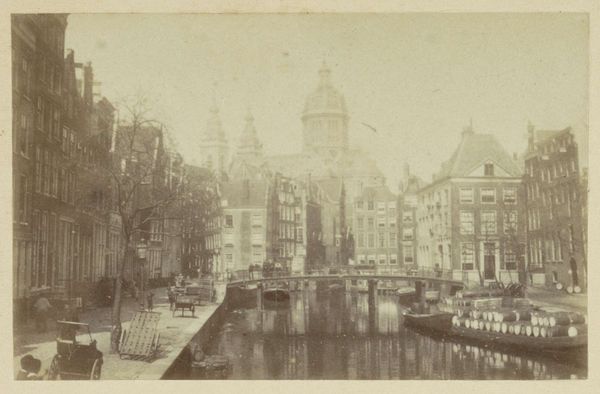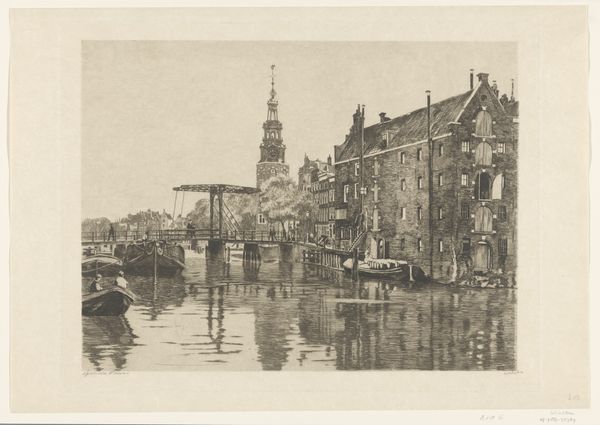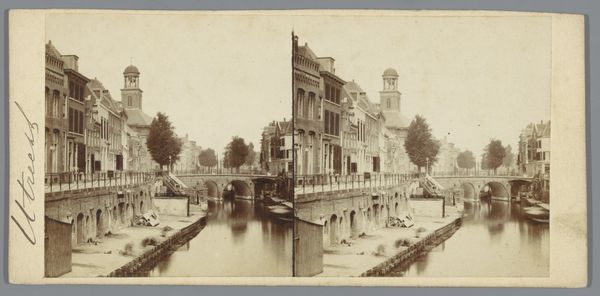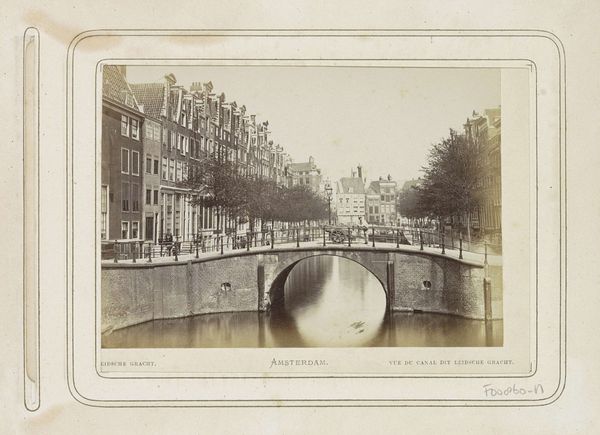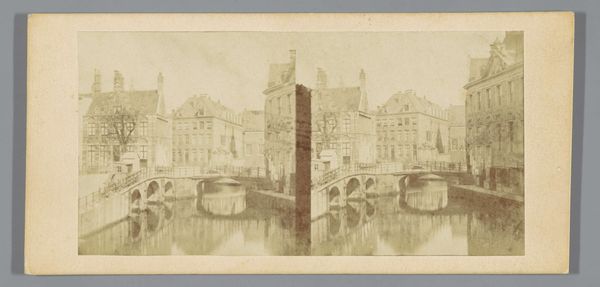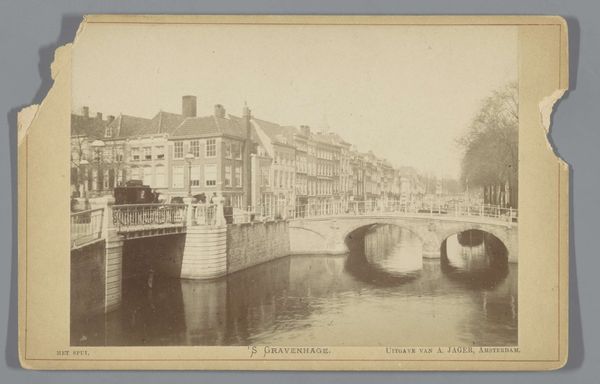
Brug en het Oude Vrouwen- en Kinderhuis aan het Spui in Den Haag c. 1870
0:00
0:00
photography, albumen-print
#
aged paper
#
yellowing background
#
photo restoration
#
dutch-golden-age
#
parchment
#
old engraving style
#
retro 'vintage design
#
photography
#
old-timey
#
warm-toned
#
cityscape
#
golden font
#
albumen-print
#
realism
#
historical font
Dimensions: height 77 mm, width 72 mm
Copyright: Rijks Museum: Open Domain
Curator: This is Andries Jager's albumen print, "Bridge and the Old Women's and Children's Home on the Spui in The Hague," created around 1870, here on display at the Rijksmuseum. Editor: There’s a quiet melancholy to this image. The tones are muted, aged. It feels… distant. What do you make of its formal qualities? Curator: Jager’s precise use of perspective immediately strikes me. The strong horizontal lines of the canal and bridge contrast beautifully with the imposing verticality of the building itself. The careful placement of the bridge bisecting the image provides an interesting study in spatial composition. Editor: It's difficult to look at that "Old Women's and Children's Home" and not consider the lives it contained. Who were these women and children? What circumstances led them to such an institution? The photograph invites us to think about social welfare in 19th-century Netherlands and how society cared (or didn't care) for its most vulnerable. Curator: An important point, certainly. Yet the very stillness and symmetry Jager achieves directs our focus to its aesthetic qualities: The contrast between the solid, geometrical architectural forms and the soft, rippling reflections in the water are skillfully rendered. And note how light plays upon the building's facade, highlighting the details of its design. Editor: But can we truly separate the aesthetic from the socio-political here? The institution looms large in the frame, almost obscuring the human figures on the bridge. Does this not suggest something about the power structures at play, where institutions overshadow individual lives, especially for marginalized people in this era? Curator: While such readings are valid, I would argue they risk overshadowing Jager's conscious manipulation of light and shadow to create a visually arresting scene. Note too how the monochromatic palette reinforces the geometrical rigidity, lending a classic sensibility reminiscent of early Dutch masters. Editor: Perhaps, but engaging with the historical context does not negate the visual analysis; it enriches it. To observe, for example, that the institution is not merely an aesthetic object but also a symbol of societal values and power relations gives us a much fuller understanding of Jager's intentions and the image's continuing resonance. Curator: It remains, regardless of intention, a superb example of the albumen printing process. The luminosity achieved through this technique, with its depth of tone and texture, remains captivating. Editor: Absolutely, a potent visual artifact and an equally powerful socio-historical document that continues to resonate today.
Comments
No comments
Be the first to comment and join the conversation on the ultimate creative platform.
